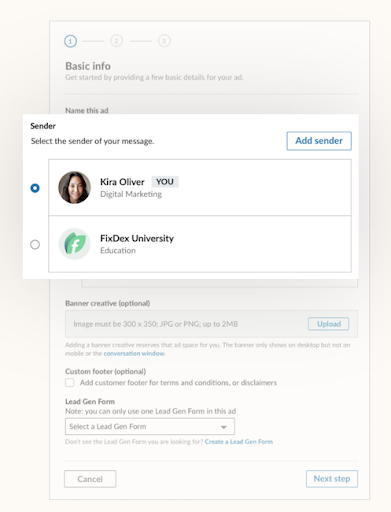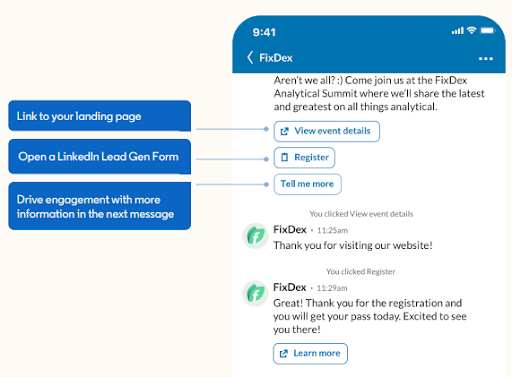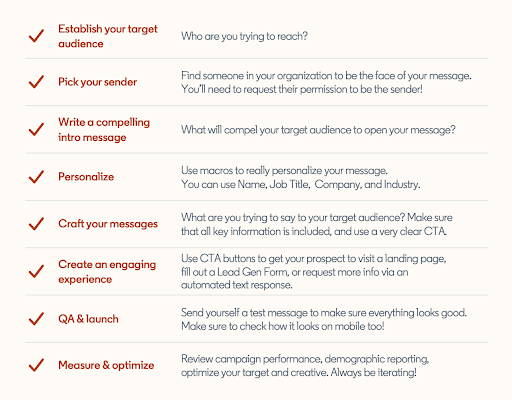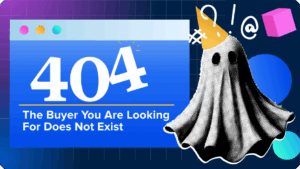If you work within the digital B2B space, regardless of industry, you have probably noticed that LinkedIn provides a plethora of products and tactics to reach your audience(s). The targeting capabilities are granular and specific, the content programs can be long-form and bursting with information just waiting to be disseminated across your multi channel media program.
But how do you engage on a more personal level? One key performance indicator, I’ve seen before, is igniting meaningful conversations. But what does that even mean? What does your business and brand deem meaningful? The beauty of answering questions like these, is that you begin to lay a foundation for a customized interaction and experience with your brand.
Social media is the perfect medium to incorporate such interactions and has afforded many brands the ability to respond directly to their customer base by answering questions, providing feedback, and even exchanging humorous quips. Brands have been able to identify the value of a one-on-one interaction. Essentially, LinkedIn has taken this very normal brand interaction from other social platforms, and polished it up to work within the professional platform as a tool to engage companies with audiences. LinkedIn has taken ad engagements from one-sided messaging systems, to a two-sided conversation, thus the naming, conversation ads.
What are Conversation Ads?
The conversation ad format builds on the message ad format (previously known as sponsored InMail), which is delivered through LinkedIn Messenger. Designed for real-time engagement, conversation ads will only be sent when a prospect is active on LinkedIn, which means the likelihood of engagement is greatly increased. You may have noticed a green status dot next to a contact’s profile photo when you’re browsing LinkedIn. This shows they’re currently online. If the green status dot has a white circle in the middle, it means the connection is available on mobile.
LinkedIn conversation ads include options to help you serve content based on where your prospect is in their journey to doing business with you. Their informational needs will vary depending on their awareness of your products and services, and their readiness to purchase.

If you are brand new to conversation ads, and just getting started, LinkedIn offers templates in Campaign Manager organized by objective: Drive Trials or Demos, Offer professional services, Promote your podcast, and Drive event/webinar registrations. These templates make it easy to get started, and they are pretty user friendly.
Tips on how to set up Conversation Ads
Conversation ads are set up the same way as other LinkedIn Sponsored Content, including targeting. This means that you can use your top-performing targets from other LinkedIn advertising campaigns. LinkedIn provides best practices, but here are a few tips when setting up your conversation ads.
Different marketing goals require different types of conversations, and content selection will help you determine if you want to drive brand awareness, drive traffic to your landing pages or generate high-quality leads. The action you want the user to take, will guide your conversation ad, and in turn, provides the opportunity to be customized.
Selecting your sender is very important. The sender represents your brand and will influence your audience’s experience. This is definitely a “first impression” type of connection point that will transition the user into their first customized experience with your brand. This is important, it’s more than a name and photo. Same rule applies here, different user actions require different senders. If you want to drive product demos, perhaps the Director of Product would be the best fit. If you are driving to content downloads or a middle funnel content piece, perhaps the CEO would be a better fit. Make sure the sender has a high-quality photo and appropriate name, title, etc.

Customizing Conversation Ads
Now it’s time to customize the conversation. There is no subject line in a conversation ad, so the first sentence will appear as the subject, so use this line to convey your main purpose for reaching out.
Throughout your messaging, stick to a conversational tone. Prospective customers want to know that your brand is human and authentic, so aim for casual language as with a typical live conversation:
- Keep it short and friendly
- Speak simply, avoiding a heavy use of jargon or big words
- Ask questions to keep a two-way dialogue
- Eliminate formalities, but don’t be too informal (no slang)
- Converse like you’re talking to a friend
It’s also best practice to personalize content with LinkedIn’s macros — pull a member’s LinkedIn profile data into your ad for instant personalization:
- First name
- Last name
- Job title
- Company name
- Industry
Conversation Ads and CTAs
CTA buttons are a great way to give the user quick options that are non-invasive. Each conversation ad should typically be a few layers deep…each layer consisting of message text and CTA buttons as responses to the question in your message. Keep these to 2 per message, when used. A tip is to never include a button that offers “no thanks” or any opt-out options on the first layer of conversation. You can also link your CTA button to the landing page you are driving to.

Once your CTAs are in place and your copy is complete, you are ready to test your conversation ad. Launch the test and take a look at how it appears on mobile, then run through the checklist below. This will ensure that you have all of your boxes checked and that you don’t miss anything before launch.

After your test is complete, make any adjustments before going live. Be sure to keep a close eye on performance. As you learn which layers of your conversation ad performs better than others, you’ll need to optimize your target over time. In Campaign Manager, you can pull performance data that allows you to isolate which offer is resonating with your target audience. Continue to check in on performance and optimize regularly. If something doesn’t seem to be resonating, just pivot and try something new. There’s nothing wrong with adapting to user behavior or response, because it garners learnings.
You are ready to get started! If you need additional support, visit the LinkedIn Sponsored Messaging page on their website, for detailed information.




